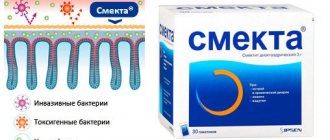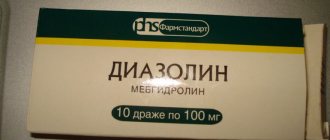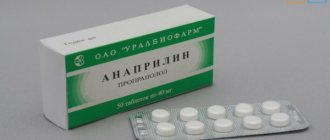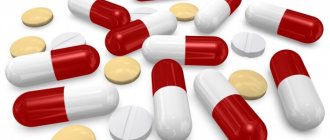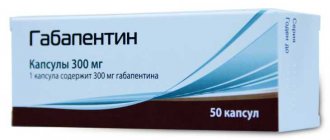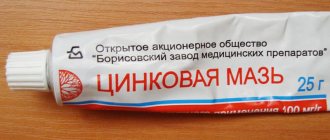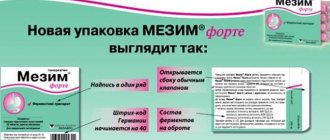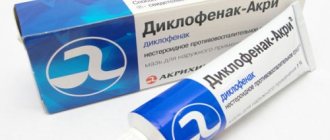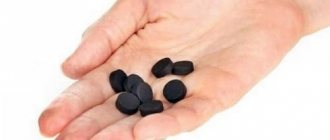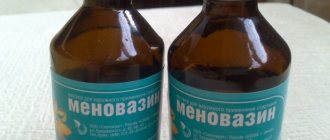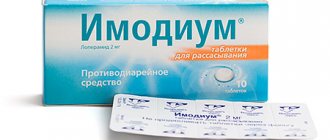Compatibility with other drugs
When using the drug, it is necessary to take into account interactions with other medications:
- With the simultaneous use of fluconazole and zidovudine, an increase in the concentration of zidovudine in plasma is observed, which is caused by a decrease in the conversion of the latter into its metabolite.
- When fluconazole is used simultaneously with midazolam, the risk of psychomotor effects increases, and with tacrolimus, the risk of nephrotoxicity increases.
- Patients receiving high doses of theophylline or who are at risk of developing theophylline toxicity should be monitored for early detection of symptoms of theophylline overdose, as simultaneous administration of fluconazole leads to a decrease in the average rate of clearance of theophylline from plasma.
- With the simultaneous use of fluconazole and terfenadine or cisapride, cases of adverse reactions from the heart, including paroxysms of ventricular tachycardia (pirouette-type arrhythmias), have been described.
- There are reports of interaction between fluconazole and rifabutin, accompanied by an increase in serum levels of the latter. With the simultaneous use of fluconazole and rifabutin, cases of uveitis have been described. Patients receiving rifabutin and fluconazole simultaneously should be carefully monitored.
- When fluconazole was used with warfarin, an increase in prothrombin time by 12% was observed. In this regard, it is recommended to monitor prothrombin time in patients receiving Flucostat in combination with coumarin anticoagulants.
- With simultaneous use, fluconazole increases T1/2 of oral hypoglycemic drugs - sulfonylurea derivatives (chlorpropamide, glibenclamide, glipizide and tolbutamide). Co-administration of fluconazole and oral hypoglycemic drugs is allowed, but the possibility of developing hypoglycemia should be taken into account.
- Concomitant use of fluconazole and phenytoin may be accompanied by an increase in phenytoin concentrations to a clinically significant extent. Therefore, if it is necessary to use these drugs in combination, it is necessary to monitor the concentration of phenytoin with adjustment of its dose in order to ensure a therapeutic concentration in the blood plasma.
- The simultaneous use of fluconazole and rifampicin leads to a decrease in AUC by 25% and a shortening of T1/2 of fluconazole from plasma by 20%. Therefore, in patients receiving concomitant rifampin, the dose of fluconazole is recommended to be increased.
- It is recommended to monitor the concentration of cyclosporine in the blood in patients receiving fluconazole, because when using fluconazole and cyclosporine in patients with a kidney transplant, taking fluconazole at a dose of 200 mg/day leads to a slow increase in the concentration of cyclosporine in the blood plasma.
Flucostat: reviews of women and doctors
Some reviews from doctors about the drug:
- Nikonorova T.V. Ultrasound doctor. A good drug for thrush, but you need the correct regimen for using this drug; it helps with chronic recurrent variants of this disease. Can be used for a long time, but after consulting a doctor. 150 mg once a week for 1-3 months, a simple dosage regimen for recurrent thrush.
- Lapin R.V. Surgeon. An excellent and effective drug, which is an integral drug in a doctor’s practice for the treatment of candidiasis of various localizations. It shows its activity in a short time. Does not cause complications or allergies. Easy to carry. I will recommend this drug to everyone. Protect yourself from thrush.
- Nazemtseva R.K. Gynecologist. Flucostat is often prescribed to women with candida infections to suppress the growth of fungi in the intestines, which are a reservoir for fungi. In parallel with local antimycotic therapy, we get a positive result. I also prescribe a drug for the prevention of candidiasis after antibiotic therapy.
We share real reviews from women:
- Elena. A good drug, I took a course of antibiotics for a female disease. During the appointment, the doctor recommended that I take Flucostat. I didn’t even notice that I was starting to get thrush from taking antibiotics. Previously, prevention against thrush was done at the end of treatment. The drug is easy to use, without side effects and has a reasonable price. Now I will only use it in similar cases.
- Marina. I took suppositories, not pills. It feels neutral, there is no discomfort when administering the drug. The price is not cheap, but the result is worth the candle. I used the complex as prescribed by the doctor. The result was visible by the end of using the course. I recommend this medicine to those who are struggling with thrush, but on the recommendation of a doctor.
- Yana. Helps even with advanced thrush. 1 capsule is usually enough for me to forget about this problem. In extreme cases, I drink another one a week later and the result is guaranteed. For me this is the best way out, because... I really don’t like using suppositories and vaginal tablets.
You can leave your feedback in the comments.
Adverse reactions
The following side effects are possible when taking the drug:
- Hematopoietic system: rarely - thrombocytopenia, leukopenia, agranulocytosis.
- Metabolism: rarely – hypertriglyceridemia, hypercholesterolemia, hypokalemia.
- Allergic manifestations: skin rash; rarely - anaphylactoid reactions (including skin itching, facial swelling, angioedema, urticaria), toxic epidermal necrolysis (Lyell's syndrome), malignant exudative erythema (including Stevens-Johnson syndrome).
- Severe dizziness, headache, convulsions (rarely) - central nervous system.
- Cardiovascular system: flutter, ventricular fibrillation, increased QT interval.
- Digestive system: attacks of nausea, vomiting, flatulence, diarrhea, abdominal pain, changes in taste; rarely - functional liver disorder (hepatitis, jaundice, hyperbilirubinemia, hepatonecrosis, increased serum levels of aminotransferases, alkaline phosphatase levels).
- Other: rarely – alopecia, functional renal impairment.
Side effects
If you regularly exceed the prescribed dosage of the medicine, side effects may occur. With long-term use of Flucostat in clinical practice, the following consequences may occur:
- From the digestive tract: changes in taste perception, nausea, increased gas formation, vomiting, epigastric pain, diarrhea, signs of impaired liver function (jaundice, hyperbilirubinemia, increased concentrations of liver enzymes).
- From the central nervous system: headache, dizziness.
- Allergic reactions: skin rash, itching, erythema, anaphylactoid reactions.
- Others: renal dysfunction, alopecia areata.
pharmachologic effect
- Flucostat is a selective inhibitor of sterol synthesis in fungal cells. It has high specificity for fungal enzymes dependent on cytochrome P450.
- Fluconazole is active against various models of fungal infections in animals, including infections caused by Blastomyces dermatitidis, Coccidioides immitis, including intracranial infections, and Histoplasma capsulatum in normal and immunocompromised animals.
- Fluconazole is effective against opportunistic mycoses, incl. caused by Candida spp., including generalized candidiasis in animals with reduced immunity; Cryptococcus neoformans, including intracranial infections; Microsporum spp. and Trychoptyton spp.
Mechanism of action
The fluconazole contained in the drug belongs to the class of triazole drugs. Its effect on fungal cells is manifested by the fact that it suppresses the production of sterols by their membranes. Ultimately, the drug destroys pathogenic fungi. Studies have confirmed the effectiveness of this remedy against:
- fungi that cause thrush;
- cryptococci;
- trichophytes;
- causative agents of opportunistic mycoses (this applies primarily to fungi belonging to the genus Candida).
The medicine also affects microscopic fungal spores. After oral administration, the active component begins to be absorbed into the blood, reaching its maximum concentration (if the medicine was taken on an empty stomach) after 0.5-1.5 hours. It is distributed throughout the body. The bioavailability of the drug reaches 90%.
The active substance undergoes metabolism to a small extent. It is excreted from the body mainly by the kidneys, mostly unchanged (80%). The half-life is on average 30 hours. Fluconazole can accumulate in certain tissues of the body (especially in the nails), where its presence can be detected even six months after the end of treatment.
The drug does not have a negative effect on the microflora of the female reproductive system and digestive tract.
pharmachologic effect
Pharmacodynamics
Thanks to the excipients included in Flucostat tablets and capsules, the absorption of active substances through the microvilli of the small intestine is facilitated.
The highest concentration in the blood plasma after taking Flucostat is observed after an hour and a half. Fluconazole is observed in the intercellular fluid and lymph after its use. The most uniform distribution of fluconazole occurs when the drug is administered intravenously: the concentration of the active substance after examining saliva, lung sputum and blood plasma turned out to be the same. It can accumulate in some structures of the body (nails), where it was detected 6 months after consumption. About three-quarters of the intermediate products are excreted through the urinary system.
The equilibrium concentration in the blood plasma of fluconazole is achieved depending on the dose of the drug and the duration of its intravenous administration.
When the dose is doubled, the equilibrium blood value is achieved after 2 days; with a single dose administered daily, the equilibrium value is established on the 5th day.
Pharmacokinetics
Fluconazole is approximately 88-89% free; the rest of the active substance is bound by plasma proteins, delaying its metabolic breakdown. Intermediate half-lives completely replace the main compound after 30 hours.
The rate of purification of fluconazole metabolites by the kidneys coincides with the rate of creatinine excretion.
Pharmacokinetics
Distribution
After intravenous administration, fluconazole penetrates well into body tissues and fluids. The concentration of fluconazole in the blood plasma is directly proportional to the administered dose of the drug; in this case, the concentration in saliva and sputum corresponds to the concentration in blood plasma. In patients with meningitis of fungal etiology, the content of fluconazole in the cerebrospinal fluid reaches 80% of the concentration in the blood plasma.
90% Css is achieved by 4-5 days after several administrations of one dose per day. Use on the first day of a dose 2 times higher than the usual daily dose allows one to achieve plasma levels of the drug that approach 90% of the Css value by the second day.
The apparent Vd approaches the total volume of fluid in the body.
Plasma protein binding is 11-12%.
Metabolism and excretion
No fluconazole metabolites were detected in peripheral blood. Fluconazole is excreted primarily by the kidneys; while approximately 80% is unchanged. Fluconazole clearance is determined by creatinine clearance.
T1/2 - 30 hours.
Flucostat for men
Flucostat is a drug that belongs to the group of broad-spectrum antifungal drugs. The medication is active against the microorganisms Candida spp., Cryptococcus neoformans, Microsporum spp., Trichoptyton spp., and Histoplasma capsulatum. Flucostat is prescribed to men for thrush if there are signs of systemic or local candidiasis (the fungus is usually localized on the genitals).
Composition and release form
The drug is available in the forms of capsules, tablets and solutions. Pharmaceutical diversity is driven by the need to comprehensively treat fungal-affected areas. The composition of the drug depends on the form of release of the drug. The table shows the main forms of the drug, their main and additional components.
| Release form | Active ingredient | Excipients |
| Pills | 50 or 100 mg fluconazole | Potato starch, sucrose, sodium sulfate. |
| Capsules | 50 mg fluconazole | Lactose, potato starch, silicon dioxide, magnesium stearate, sodium sulfate. |
| Solution for intravenous administration | Fluconazole 2 mg | Sodium chloride; Sterile water for injection. |
Mechanism of action of the drug
The medicine has a detrimental effect on fungi, destroying their cell wall by damaging the protein structure. After oral administration of tablets or capsules, the drug is well absorbed in the small intestine. The bioavailability of the main active component is about 90%. The maximum plasma concentration of fluconazole after taking a 150 mg dose on an empty stomach is approximately 80%. The active substance easily penetrates into all biological fluids (blood, urine, saliva, cerebrospinal fluid). The drug is excreted from the male body primarily by the kidneys.
Indications for use
The drug is prescribed after confirmation of the diagnosis using laboratory research methods. Flucostat tablets for thrush are used in the following cases:
- chronic candidiasis;
- balanitis (inflammation of the foreskin of the penis);
- generalized candidiasis;
- prevention of candidiasis in men during chemotherapy;
- atypical forms of candidiasis in men;
- signs of thrush in children;
- recurrence of thrush symptoms in men.
Flucostat's analogs
In cases where the drug does not have the desired effect or causes side effects, medications with similar properties are prescribed. Among the analogues of Flucostat on the pharmaceutical market, the following drugs can be distinguished:
- Diflucan. An antifungal agent in the form of tablets, cream and ointment is aimed at destroying fungi of the genus Candida spp with local damage to the skin. It differs from Flucostat in its high concentration of the active component, due to which it copes with mycoses faster. However, the drug is more likely to cause side effects.
- Fluconazole. The medicine in the form of capsules, tablets and ointments is an analogue of the Russian-made drug. The main advantage of the medicine is its price (from 35 rubles).
special instructions
It should be prescribed with caution if a rash occurs during the use of fluconazole in patients with systemic/invasive fungal infections and superficial fungal infections, as well as in the case of proarrhythmogenic conditions in patients with multiple risk factors (for example, electrolyte imbalance, organic heart pathologies, with simultaneous taking medications that cause arrhythmias). Capsules should be used with caution in case of alcoholism. Treatment should begin before culture and other laboratory results are available. In rare cases, hepatotoxicity, including death, has been observed when using fluconazole (mainly in patients with serious concomitant diseases). There was no obvious relationship between the incidence of hepatotoxic effects of fluconazole and the duration of treatment, total daily dose, age and gender of the patient.
The hepatotoxic effect of the drug is usually reversible, its symptoms disappeared after cessation of treatment. Patients with AIDS are more likely to experience severe skin reactions when using many drugs. If a patient receiving therapy for a rash that can be associated with the use of fluconazole, as well as a superficial fungal infection, should discontinue use. If a rash occurs in patients with systemic/invasive fungal infections, they should be closely monitored and fluconazole treatment should be discontinued if erythema multiforme or bullous lesions develop.
Use for renal impairment
Patients with renal failure (KR
Fluconazole is excreted mainly in the urine unchanged. With a single dose, no dose change is required. In patients (including children and the elderly) with impaired renal function, when retaking the drug, a loading dose of 50 mg to 400 mg should be initially administered.
When CC>50 ml/min, the average recommended dose of the drug is used; with CC from 11 to 50 ml/min, a dose of 50% of the recommended dose is used. For patients regularly undergoing hemodialysis, one dose of the drug is administered after each hemodialysis session.
Instructions for use of Flucostat method and dosage
Capsules are intended for oral use. Take 1 time per day. The duration of therapy is determined by clinical and laboratory effectiveness.
The following doses are recommended.
- For cryptococcal infections, candidemia, disseminated candidiasis and other invasive candidal infections: on the 1st day of therapy, you should take 400 mg, then 200–400 mg once a day.
- To prevent relapse of cryptococcal meningitis in patients with AIDS after a full course of primary treatment, it is prescribed to take 200 mg once a day for a long period.
- For atrophic oral candidiasis caused by wearing dentures: 50 mg once a day. Course duration is 10-14 days.
- For other candidal infections of the mucous membranes: 50–100 mg per day for a course of 14–30 days.
- To prevent relapses of oropharyngeal candidiasis in patients with AIDS after completing the full course of primary treatment: 150 mg once a week.
- For vaginal candidiasis and balanitis: a single dose of 150 mg. To prevent relapses, 150 mg is prescribed once a month for 4–12 months.
- For the prevention of candidiasis in cancer patients during cytostatic chemotherapy or radiation therapy: 50–400 mg 1 time per day. In case of a high risk of developing a generalized infection, take 400 mg 1 time per day several days before the expected onset of neutropenia. After the number of neutrophils increases to more than 1000/mm3, treatment is continued for another 1 week.
- For skin mycoses and candidiasis infections, 150 mg is prescribed once a week or 50 mg once a day. The duration of the course is 2–4 weeks, for mycoses of the feet - up to 6 weeks.
- For pityriasis versicolor: 50 mg once a day for a course of 2–4 weeks.
- For onychomycosis: 150 mg once a week until a new nail grows (3-6 months for fingernails and 6-12 for toenails).
- For deep endemic mycoses: 200–400 mg per day for 11–24 months (coccidioidomycosis), 2–17 months (paracoccidioidomycosis), 1–16 months (sporotrichosis), 3–17 months (histoplasmosis).
- For the prevention of fungal infections in patients with malignant neoplasms: 50 mg 1 time per day. Therapy continues as long as the patient is at increased risk due to cytostatic or radiation therapy.
Children should not be prescribed the drug at a daily dose higher than in adults.
Dosage regimen for children:
- Children with candidiasis of the mucous membranes are prescribed on the 1st day of therapy - 6 mg per 1 kg per day, then - 3 mg/kg per day, for systemic candidiasis or cryptococcosis - 6-12 mg/kg, taking into account the severity of the disease. For prevention against the background of reduced immunity (taking into account the severity of neutropenia) - 3-12 mg/kg per day.
- For generalized candidiasis and cryptococcal infection: 6-12 mg/kg per day, taking into account the severity of the disease.
- For the prevention of fungal infections in children with reduced immunity: 3-12 mg/kg per day (taking into account the severity and duration of induced neutropenia).
- In newborns, the elimination of Flucostat is slowed down, therefore, in the first 2 weeks of life, the drug is prescribed in the same dose as for older children. The interval between administrations is 72 hours. For children aged 3 and 4 weeks, the drug is administered in the same dose with an interval of 48 hours.
When converting from intravenous administration to taking capsules and vice versa, there is no need to adjust the daily dose.
The solution is administered intravenously at a rate of no more than 20 mg/min (10 ml/min). For cryptococcal infections, candidemia, disseminated candidiasis and other invasive candidal infections: on the 1st day - 400 mg / day, then - 200-400 mg 1 time per day. The duration of therapy for cryptococcal infections is 6–8 weeks.
Drugs for intravenous administration can be combined with the following solutions: 20% glucose solution, Ringer's solution, Hartmann's solution, potassium chloride solution in glucose, 4.2% sodium bicarbonate solution, aminofusin, isotonic sodium chloride solution.
The drug can be administered using conventional transfusion kits.
Flucostat for thrush - course of treatment
The specifics of using Flucostat for the treatment of thrush are determined only by a gynecologist. Whatever the form of the disease, preventive use of one tablet per week is necessary. This measure consolidates the effect of therapy and prevents relapses.
Please note that if the form of the disease is mild, the doctor may prescribe only one tablet. Together with Flucostat, other drugs are used to treat vaginal candidiasis. In this case, you do not need to continue to use the tablets if this is not necessary.
During the course of treatment, you must follow these recommendations:
- if it is indicated to use the product several times a day, then the time intervals between doses should be the same;
- It is forbidden to skip a dose;
- The tablet is taken with water unless otherwise indicated.
Features of the drug
Dosage forms
Flucostat is one of the few drugs available in four dosage forms:
- Capsules intended for oral use. The predominant color of the shell is pink, additional colors are white or light brown. The capsule shell is opaque. The contents of the capsule are a whitish or white powder. The cardboard paper packaging contains 1 blister with 7 tablets. Capsules are squeezed out of the blister cells, which follow the shape of the capsule.
- The second dosage form for oral use is Flucostat tablets. Packed one or two pieces per blister. In a cardboard package - 1 blister. Tablets weigh 50 mg or 150 mg.
- Suppositories for vaginal administration are packaged in a capsule made of polyvinyl chloride or aluminum foil. The color of the candles is white, the shape is elongated and round.
- Flucostat solution for injection into a vein has a transparent color. The glass bottle holds 50 ml of the drug solution. Packaging: cardboard paper.
Composition of Flucostat
The isotonic solution of Flucostat for intravenous administration contains sodium chloride dissolved in distilled water and the active ingredient fluconazole at the rate of 2 mg per 1 ml of solution.
The capsule powder consists of the active substance fluconazole in an amount of 0.15 g and excipients to enhance absorption and bioavailability of the drug: maize starch, milk sugar, colloidal silicon oxide, magnesium stearic, sodium lauryl sulfate. To give the capsule shape and form the color composition, the capsule shell includes titanium oxide, a coloring agent - one of the iron oxides, derivatives of the phenolic compound parahydroxybenzoate with the replacement of hydrogen in the ring with methyl and propyl substituents.
Prices
The initial cost of Flucostat in capsules on the shelves of Russian pharmacies is:
- for one capsule weighing 0.15 g - from 175 rubles;
- for 2 capsules weighing 0.15 g – 363 rubles;
- for 7 capsules weighing 0.05 g - 290 rubles.
The manufacturer of the Flucostat infusion solution is a pharmaceutical factory in the Khabarovsk Territory. The drug is temporarily not available and is therefore not available in pharmacies. The last price at which a bottle of Flucostat was sold was 221 rubles.
Release form and composition
The drug is available in the following dosage forms:
- Film-coated capsules are light pink or pink-brown in color, opaque. Flucostat capsules are packaged in blister packs in quantities of 1 piece (dosage 150 mg) or 7 pieces (dosage 50 mg). The cardboard pack contains 1 blister pack with the appropriate number of capsules and dosage, as well as instructions for use of the drug.
- Tablets of 50 or 150 mg are white, oval in shape, secured in a contour-cell blister of 1 or 2. A cardboard pack contains only 1 plate with the drug.
- Solution for intravenous administration in the form of a clear, colorless liquid in 50 ml bottles. One bottle of medicine is placed in a cardboard package.
- White oval-shaped vaginal suppositories, which are packaged in blisters made of aluminum foil or PVC.
Prescription during pregnancy and lactation
During the use of the drug, the active ingredients are absorbed into the main bloodstream and distributed throughout the woman’s body, evenly deposited in biological fluids. That is why the use of the antifungal drug Flucostat during pregnancy is allowed only for health reasons (for example, in the case of severe, generalized infections that threaten the life of the expectant mother and fetus).
If there is a need to undergo a course of conservative therapy during breastfeeding, then the child should be weaned from the breast and mother’s milk, because even in such a specific secretion traces of biologically active substances that are part of the enteral and parneteral forms of Flucostat are found.
What are the benefits of Flucostat for thrush?
Experts prescribe Flucostat to women because it has several advantages:
- quickly begins to have its effect;
- suppresses the activity of fungi not only in the vagina, but also in every part of the body affected by Candida fungi;
- for mild forms of pathology, just 1 tablet is enough;
- the drug is compatible with any type of contraceptive drugs;
- can be used by men;
- helps to completely suppress the cause of thrush.
Indications for use
The main medical indication for taking Flucostat capsules is etiotropic therapy (treatment aimed at destroying the causative agent of the infectious process) of fungal diseases caused by pathogens sensitive to the active substance of the drug:
- Various fungal skin infections, including mycoses of the feet, trunk, groin area, onychomycosis, lichen planus.
- Genital candidiasis (thrush) with a severe infectious process that cannot be treated with topical antifungal drugs, including vaginal candidiasis in women or the glans penis in men.
- Candidiasis of the mucous membranes, including those localized in the oral cavity, pharynx, esophagus, trachea, and structures of the urinary system.
- Cryptococcosis, including fungal infection of the membranes of the brain. The drug is used to treat this fungal disease in patients with normal and reduced immunity.
- Generalized candidiasis is the spread of an infectious process in various organs and tissues, which often develops against the background of a pronounced decrease in the functional activity of the immune system.
- A group of fungal infections represented by deep endemic mycoses, including paracoccidioidomycosis, coccidioidomycosis, histoplasmosis, sporotrichosis in patients with normal or reduced immunity.
The drug is also used to prevent the development of fungal infections in patients with reduced functional activity of the immune system due to the oncological process and treatment with cytostatics.
"Flucostat" overdose
“Flucostat” overdose
In case of an overdose of this antifungal agent, the following symptoms may be observed: • Hallucinations due to poisoning • Side effects manifest themselves to the maximum • The patient’s behavior becomes close to paranoid
However, there is no specialized antidote for poisoning with this drug. A patient with an overdose of flucostat undergoes gastric lavage and symptomatic treatment of poisoning. They also try to remove the drug as quickly as possible using forced diuresis.
Indications for use
- Candidiasis of the mucous membranes, including the esophagus, pharynx and oral cavity (including atrophic candidiasis of the oral cavity caused by prolonged wearing of dentures), candiduria, bronchopulmonary infections (non-invasive); prevention of reappearance of oropharyngeal candidiasis in patients with AIDS.
- Generalized candidiasis, including disseminated candidiasis, candidemia and other types of invasive candidal infections (including infections of the eyes, endocardium, peritoneum, urinary and respiratory tract). Therapy can be used in patients with malignant tumors, patients in intensive care units, people receiving immunosuppressive or cytotoxic drugs, as well as in the presence of other factors contributing to the occurrence of candidiasis.
- Genital candidiasis: candidal balanitis, therapy for vaginal candidiasis (in chronic recurrent form or in the acute stage), prophylactic use to reduce the frequency of relapses of vaginal candidiasis (more than three episodes per year).
- Cryptococcosis, including cryptococcal infections of the skin, lungs and other localizations of this infection, both in people with a normal immune response and in people with various forms of immunosuppression (including AIDS patients, organ transplant recipients); cryptococcal meningitis. Can be used to prevent cryptococcal infection in patients with AIDS.
- Prevention of fungal infections in persons with malignant neoplasms who are predisposed to the occurrence of such infections as a result of radiation therapy or cytotoxic chemotherapy.
Additional indications for capsules:
- Deep endemic mycoses, including paracoccidioidomycosis, coccidioidomycosis, histoplasmosis and sporotrichosis in patients with normal immunity.
- Mycoses of the skin, including pityriasis versicolor, onychomycosis, mycoses of the groin area, body, feet, skin candidiasis.
Taking the drug
The instructions for the drug Flucostat recommend taking this drug when treating thrush. In addition, the medicine has a wide range of action against various types of fungal diseases occurring in the human body.
How to take Flucostat for thrush? The medication regimen is quite simple. If the disease appears for the first time, then it is possible to obtain a full therapeutic effect, and at the same time a complete cure, after taking one capsule of the drug with a volume of 150 mg. To consolidate the result, you can take another tablet after a few days.
In the chronic course of the disease, treatment is different. Chronic vaginal candidiasis is a fairly serious disease, fraught with relapses and complications. Therefore, in this case, a single dose of the drug will not achieve the goal. The course of treatment is extended, and the dose of the medicine is increased accordingly.
Attention! The amount and forms of taking the drug, as well as the duration of treatment, are determined by the doctor.
In case of a complicated course, therapy is much longer
Contraindications
Strict contraindications include the following conditions:
- children under 3 years of age;
- galactosemia;
- increased individual sensitivity to the active ingredient or excipients;
- glucose-galactose malabsorption syndrome;
- lactose intolerance (including lactase deficiency);
- hereditary or acquired intolerance to the components of a pharmaceutical drug;
- combined use of Flucostat with drugs that prolong the QT interval on the electrocardiogram (in particular astemizole or terfenadine).
You should also outline a list of non-absolute contraindications when the medicine must be used with caution (conservative therapy under the supervision of qualified medical personnel is recommended):
- renal or liver failure;
- alcoholism;
- treatment with potentially dangerous pharmaceuticals with a high percentage of hepatotoxicity;
- proarrhythmogenic conditions (especially if the patient has multiple risk factors for arrhythmia).
Synonyms of nosological groups
| Category ICD-10 | Synonyms of diseases according to ICD-10 |
| B35-B49 Mycoses | Fungal infection |
| Fungal skin infections | |
| Fungal skin lesions | |
| Fungal infections of skin folds | |
| Fungal infections of the bronchial mucosa | |
| Fungal infections of the oral mucosa | |
| Fungal infections | |
| Fungal skin infections | |
| B35.1 Mycosis of nails | Fungal nail disease |
| Fungal nail infection | |
| Fungal nail diseases | |
| Fungal nail infections | |
| Dermatomycosis of nails | |
| Mycoses of nails | |
| Onychomycosis | |
| Onychomycosis | |
| Athlete's nails | |
| B35.2 Mycosis of the hands | Interdigital fungal erosion |
| Mycoses of the hands | |
| Rubrophytosis of hands | |
| Trichophytosis of the palms | |
| Athlete's hand | |
| Athlete's palms | |
| B35.3 Mycosis of the feet | Foot fungus |
| Dermatophytosis of the feet | |
| Interdigital fungal erosion | |
| Mycosis of the feet | |
| Mycoses of the feet | |
| Mycoses of the feet and large folds | |
| Athlete's foot | |
| B35.6 Athlete's foot | Fungal infections of skin folds |
| Dermatomycosis of the groin area and smooth skin | |
| Mycosis of the groin area | |
| Mycoses of the feet and large folds | |
| Dermatophytosis inguinalis | |
| Athlete's inguinal | |
| Inguinal ringworm | |
| B35.8 Other dermatophytosis | Dermatomycosis of the legs |
| Dermatophytosis of the genitals | |
| Rubromycosis | |
| Rubrophytia | |
| Trichophytosis of the skin of the lower extremities | |
| B36.0 Tinea versicolor | Pitirosporum orbiculare |
| Pityriasis versicolor | |
| Pityriasis furfuracea (pityriasis furfuracea) | |
| Ringworm multicolored | |
| Pityriasis versicolor | |
| Tinea versicolor | |
| B37.0 Candidal stomatitis | Atrophic candidiasis of the oral cavity |
| Fungal diseases of the oral cavity | |
| Fungal infections of the mouth | |
| Fungal infectious and inflammatory diseases of the oral cavity | |
| Candidiasis of the gastrointestinal tract | |
| Candidiasis of the skin and mucous membranes of the mouth and pharynx | |
| Oral candidiasis | |
| Oral candidiasis | |
| Candidiasis with damage to the skin and mucous membranes | |
| Candidiasis of the oral mucosa | |
| Candidiasis of the mucous membranes | |
| Candidiasis of mucous membranes and skin | |
| Candidiasis of the mucous membranes of the oral cavity and pharynx | |
| Candidiasis of the oral cavity and pharynx | |
| Mucocutaneous candidiasis of the oral cavity | |
| Mycotic jam | |
| Oral thrush | |
| Oropharyngeal candidiasis | |
| Oropharyngeal candidiasis | |
| Chronic atrophic candidiasis of the oral cavity | |
| Chronic candidiasis of the mucous membranes | |
| B37.1 Pulmonary candidiasis | Bronchopulmonary candidiasis |
| Candidiasis of internal organs | |
| B37.2 Candidiasis of the skin and nails | Fungal paronychia |
| Fungal eczema | |
| Fungal dermatoses | |
| Fungal diseases of smooth skin | |
| Fungal infections of smooth skin | |
| Fungal infections of smooth body skin | |
| Fungal nail infections | |
| Yeast skin infection | |
| Skin candidiasis | |
| Candidiasis of the skin and mucous membranes of the mouth and pharynx | |
| Candidiasis of the skin of the nail folds | |
| Candidiasis of the nail folds | |
| Nail candidiasis | |
| Candidiasis with damage to the skin and mucous membranes | |
| Candidiasis of mucous membranes and skin | |
| Candidal paronychia | |
| Candidomycosis of the skin | |
| Skin candida infections | |
| Cutaneous candidiasis | |
| Interdigital fungal erosion | |
| Mycotic dermatitis | |
| Paronychia candidiasis | |
| Superficial form of skin candidiasis | |
| Superficial candidiasis | |
| Superficial nail candidiasis | |
| Superficial mycosis of the skin | |
| Chronic skin candidiasis | |
| B37.3 Candidiasis of the vulva and vagina (N77.1*) | Vaginal candidiasis |
| Vaginal candidiasis | |
| Vulval candidiasis | |
| Vulvovaginal candidiasis | |
| Vulvovaginal candidiasis | |
| Vulvovaginitis candidiasis | |
| Vulvovaginitis mycotic | |
| Fungal vaginitis | |
| Vaginal candidiasis | |
| Candidiasis of internal organs | |
| Genitourinary candidiasis | |
| Candidiasis of the genitourinary organs in women | |
| Candidiasis with damage to the skin and mucous membranes | |
| Candidiasis of the mucous membranes | |
| Candidiasis of mucous membranes and skin | |
| Candidal vaginitis | |
| Candidiasis vulvitis | |
| Vulvovaginal candidiasis | |
| Colpitis of fungal etiology | |
| Vaginal thrush | |
| Moniliasis vulvovaginitis | |
| Acute vaginal candidiasis | |
| Acute mycosis of the vagina | |
| Superficial candidiasis of the genital mucosa | |
| Recurrent vaginal candidiasis | |
| Recurrent vaginal candidiasis | |
| Urogenital candidiasis | |
| Chronic vaginal candidiasis | |
| Chronic candidiasis of the mucous membranes | |
| Chronic recurrent vaginal candidiasis | |
| B37.4 Candidiasis of other urogenital sites | Genital candidiasis |
| Genitourinary candidiasis | |
| Candidiasis of the mucous membranes | |
| Candidal balanitis | |
| Candidiasis balanoposthitis | |
| Candiduria | |
| Superficial candidiasis of the genital mucosa | |
| Urogenital candidiasis | |
| B37.6 Candidal endocarditis (I39.8*) | Candidiasis of internal organs |
| B37.7 Candidal septicemia | Generalized candidiasis |
| Generalized candidiasis | |
| Candidemia | |
| Generalized candidiasis | |
| Systemic candidiasis | |
| Systemic candidiasis | |
| Severe invasive forms of candidal infections | |
| B38 Coccidioidomycosis | California fever |
| Coccidiodomycosis | |
| Coccidioidosis | |
| Coccidioidosis (coccidioidomycosis) | |
| Coccidioidomycosis | |
| Desert rheumatism | |
| B41 Paracoccidioidomycosis | Paracoccidioidosis |
| B42 Sporotrichosis | Dory's disease |
| Rose Lovers Disease | |
| Schenck-Berman disease | |
| Rhinocladiasis | |
| B45 Cryptococcosis | Cryptococcus |
| B45.0 Pulmonary cryptococcosis | Torulez |
| B49 Mycosis, unspecified | Visceral mycosis |
| Deep endemic mycoses | |
| Fungal infection | |
| Fungal skin infections | |
| Fungal skin lesions | |
| Fungal infections of skin folds | |
| Fungal infections of the bronchial mucosa | |
| Fungal infections of the oral mucosa | |
| Fungal infections | |
| Fungal skin infections | |
| Keratomycosis | |
| Cutaneous mycosis | |
| Pulmonary mycosis | |
| Mycosis | |
| Mycoses of the eyes | |
| Mycoses of the gastrointestinal tract | |
| Skin mycoses | |
| Mycoses of large skin folds | |
| Systemic mycoses | |
| Mycoses of mucous membranes | |
| Mycoses with secondary bacterial infection | |
| Mycoses in patients with immunodeficiency | |
| Common mycoses | |
| Systemic mycoses | |
| Tropical mycoses | |
| N48.6 Balanitis | Balanitis dry obliterans |
| Fungal balanitis |
Reviews
Ivan, Nalchik: “Thrush on the penis is something. The head itches, burns, you can’t walk normally, let alone have sex. Flucostat helped me from the first capsule. I just took it and after 2 hours I felt better. After another couple of days, the ulcers went away and I was able to return to normal life.”
Elizaveta, Moscow: “The doctor prescribed Flucostat for the treatment of chronic thrush. He said that the husband should definitely take the same drug, since it could be the provocateur of relapses. We were treated and the thrush disappeared. There have been no symptoms for a year now.”
Natalia, Yekaterinburg: “I took Flucostat to treat nail fungus. My liver began to hurt. The drug was discontinued - now I take hepatoprotectors. The doctor prescribed nail removal using ointments and special solutions. People who have a weak liver should not take this drug.”
Characteristics of the product
The mechanism of development of the therapeutic effect is associated with its ability to prevent the synthesis of substances in the cells of pathogenic microflora. Flucostat is rapidly absorbed into the systemic circulation.
Composition and indications
The active ingredient of the drug is fluconazole in various dosages. The Russian manufacturer indicated the Latin name of Flucostat - Flucostat.
Flucostat release form:
- solution for intravenous administration;
- pink capsules filled with white powder;
- pills;
- vaginal suppositories.
The injection solution is packaged in 50 ml bottles. The package contains 1 piece of liquid drug. In 1 ml of solution - 2 mg of fluconazole and additional substances (saline and water). One capsule contains 50-150 mg of fluconazole, and also contains auxiliary elements in the form of silicon dioxide, corn starch, magnesium stearate and lactose. The capsule shell contains gelatin, iron oxide dye, titanium dioxide and acetic acid. This form is sold in blisters of 7 pieces. The package contains one record.
Tablets of 50−150 mg are oval in shape and are located in a contour cell. After oral administration, the active components dissolve well in the intestines. After 30−90 minutes, the maximum concentration of the drug in the blood is reached. The constituent substances penetrate into all body fluids.
After completion of treatment with Fluconazole, its elements remain in the nail tissue for 6 months.
After several injections into a vein, 1 dose per day, the maximum level of the active component is achieved by the fifth day of treatment, and with the initial use of a double dose - by the 2nd day. According to the annotation, the drug is eliminated naturally after 30 hours.
Indications for use:
- cryptococcosis;
- pityriasis versicolor;
- candidiasis (thrush) of the mucous membranes;
- mycoses of various types;
- prevention of fungal infections in patients with immunodeficiency.
An expensive and effective drug has a maximum cost of 400 rubles. Selectively inhibits the synthesis of sterols in the cell of harmful fungi. In accordance with the instructions for use, the drug is prescribed after diagnosis and determination of the type of fungal infection causative agent. The risk of sensitivity to the active substance is also checked.
The drug is effective against cryptococci, trichophytons, yeast-like fungi of the genus Candida, histoplasma, and coccidiosis.
In elderly patients due to decreased renal function, a reduction in the dosage of Flucostat is necessary. Patients undergoing hemodialysis (hardware blood purification) are prescribed the maximum dose after each procedure.
During pregnancy, the drug is prescribed under strict control, after assessing the risk of negative consequences for the fetus and for medical reasons.
Fluconazole does not affect the nervous system, although there are side effects. Flucostat is available freely without a doctor's prescription. Self-administration of the drug is undesirable. Any form of medicine is stored for 2 years from the date of production at a temperature not exceeding 25 degrees.
With candidiasis, a woman feels itching and burning in the intimate area, and white, curd-like discharge from the vagina also appears. In advanced forms of the disease, the therapeutic effect of treatment with Flucostat occurs within two weeks.
Treatment with vaginal suppositories does not cause any inconvenience and is characterized by a minimal number of side effects. The price of Flucostat for 150 mg varies between 250-300 rubles. This is the price of 1 capsule located in a contour cell.
Flucostat for men is also an effective remedy in the fight against fungal infections of the urogenital tract. Men with weakened immune systems are susceptible to the disease.
Dosage and rules of administration
The medicine is taken orally in tablet form, rectally, or administered intravenously. Adults with cryptococcal meningitis and infections take 400 mg of the drug on the first day and continue treatment at 200-400 mg per day. Tablets and capsules are swallowed whole without chewing, as this affects the effectiveness of treatment. Taking before or after meals does not matter.
The duration of therapy depends on the stage of the disease and the effectiveness of treatment, on average 6-8 weeks. To prevent relapse, take 400 mg of the drug on the first day, then 200 mg until complete recovery. The drug acts quickly, but in case of a complicated medical history, therapy continues for a long time. If the patient has a weakened immune system, treatment may take longer.
For oral candidiasis resulting from wearing dentures, the drug is taken 50 mg once a day for two weeks. For candidiasis other than the genital location, the dosage is 50-100 mg per day for a treatment duration of 1 month. For thrush, 150 mg of the drug is prescribed once.
For prophylaxis, Flucostat is used at a dose of 150 mg once a month. For mycosis of the skin with varying degrees of damage, it is recommended to take 150 mg of fluconazole once every 7 days or 50 mg once a day. The duration of therapy ranges from two weeks to a month.
Pityriasis versicolor is treated with 300 mg of Flucostat once every 7 days for two weeks. Onycomycosis with 150 mg of the active substance Flucostat once a week. In pediatric practice, this treatment is also relevant and is often used by doctors. The dosage is selected individually based on weight and diagnosis.
For candidiasis of the mucous membranes, the dosage is 3 mg per kilogram of the child’s weight. On the first day, a maximum dose of 6 mg per kilogram is allowed. Cryptococcal infection is treated with 6-12 mg per kilogram of the child’s body weight. This is a daily dosage, which depends on the severity of the pathological process.
To prevent fungal infections in children with weakened immune systems, the drug is prescribed at 3-12 mg per kilogram of weight, depending on the individual characteristics of the body. For children and adults with kidney problems, the dosage of the drug is reduced by the doctor.
An intravenous solution is used at a rate of no more than 20 mg per minute for cryptococcal and other infections. On the first day, 400 mg per day is prescribed, then from 200 to 400 mg once a day.
Price
The cost of Flucostat depends on the chosen form of release, the concentration of fluconazole and the level of the trading margin in the network. You can buy the drug through pharmacies or the Internet at the following approximate prices:
| Variety | Internet price, in rubles | Pharmacy price, in rubles |
| Solution 50 ml | 255 | 275 |
| Tablets 50 mg, 1 pc. | 140 | 169 |
| Suppositories 150 mg 1 pc. | 199 | 239 |
| Capsules 150 mg 1 pc. | 203 | 230 |
| 50 mg 7 pcs. | 343 | 370 |
| 150 mg 2 pcs. | 382 | 400 |
Flucostat price
| Name of capital's pharmacies | Price of capsules 150 mg, No. 1, rubles |
| Unifarm | 170 |
| Doctor Stoletov | 175 |
| Online pharmacy "Dialogue" | 180 |
| Pharmapark | 205 |
| ElixirPharm | 210 |
| Neopharm | 215 |
| Samson-Pharma | 250 |
How to cure thrush with a Flucostat capsule, does it help?
Have you been fighting thrush for many years without success?
Head of the Institute: “You will be amazed at how easy it is to cure thrush by taking it every day...
Read more "
Most women looking for an effective remedy to combat the annoying candida fungus have come to the conclusion that flucostat is the best medicine for thrush. Is this really so and does flucostat help against thrush for everyone who purchases this treasured capsule? Let’s try to figure it out.
For candidiasis, flucostat is prescribed because its active ingredient is the well-known fluconazole. The triazole antifungal drug is very effective against most fungi and has a fairly wide range of applications. In addition, many other drugs that are among the ten best antifungal drugs are made based on fluconazole. These are Russian tablets Fluconazole, French Diflucan, Slovenian Diflazon, Indian Fucis and Forkan. Despite the fact that their names are so different, as well as the price per package, they all have almost the same effect and are bioequivalent. Moreover, the capsule for thrush, flucostat, is nothing more than a generic version of the French advertised drug Diflucan, because the Russian medicine appeared after the patent for the original drug had expired. Since we are talking about how to use Flucostat against thrush, we will consider the effect of only this drug.
Available in various forms:
The most preferred form of taking Flucostat for thrush is 150 mg capsules. A solution for intravenous injection is very rarely used.
And the most pressing question that patients ask a doctor at an appointment or a pharmacist at a pharmacy: does Flucostat help with thrush? No drug gives a 100% guarantee. It helps most people very effectively. People themselves are often to blame for the fact that Candida fungus causes chronic diseases, which are then treated for years and give constant relapses. If Flucostat did not help someone get rid of thrush, you should not criticize the drug, it is better to look for the reason for the unsuccessful course of therapy and replace the drug, because there is always an alternative.
Medicine for thrush Flucostat: advantages and disadvantages of the drug
If you have a yeast infection caused by candida, many people go to the pharmacy to buy Flucostat tablets for thrush. I would like to say right away that this drug is not available in this form. All drugs that the patient takes orally are often called tablets by people, out of ignorance or carelessness, but the medicine is in the form of capsules that are taken orally. They can be washed down with a small amount of water. You can take capsules at any time of the day, regardless of when you had a meal. Thrush in women can be cured with one capsule using the drug flucostat.
The drug flucostat for thrush in both men and women can be prescribed for various forms of fungal infection:
- With generalized candidiasis, which affects internal organs (lungs, genitourinary system, abdominal cavity), as well as the eyes
- For candidal stomatitis, fungal infection of the pharynx, esophagus
- For acute and chronic forms of genital candidiasis
- As a prophylactic agent after treatment with antibiotics or after a long course of chemotherapy in patients with weak immunity
Despite all the advantages of the drug flucostat for thrush, not every body of men and women reacts to it in the same way. When using the medicine, although rarely, unwanted side effects from various organs and systems may occur:
- CNS: mild headaches, infrequent cramps, general fatigue, weakness
- CVS: arrhythmia
- Gastrointestinal tract: diarrhea, nausea, belching, heartburn, flatulence, foreign taste in the mouth, liver dysfunction
- Hematopoietic system: decreased number of leukocytes, platelets, agranulocytosis
Instructions or how to take flucostat for thrush?
Before I tell you how to take this remedy, I would like to warn everyone: never use the drug without a doctor’s prescription. You can know how it works, what course of treatment is offered in order to compare it with the effect of alternative antifungal medications and discuss the choice with your doctor.
The use of Flucostat for thrush is described in the instructions, so even after reading our advice, do not ignore this small piece of paper and do not throw it away, but subject it to careful study. First of all, you should pay attention to how to take medicine for various diseases, depending on the form of the drug and contraindications for its use.
According to the instructions, it is not recommended to take flucostat for thrush:
Only a doctor can draw up an individual plan for how to drink and how to use Flucostat for thrush for those who have kidney disease or heart rhythm disorders. The method of using the drug will be gentle. In this case, you will have to constantly monitor your heart function or kidney condition.
Applications of Flucostat for thrush:
- An injection solution is administered intravenously by infusion.
- Capsules of 150 mg, 100 mg, 50 mg are taken orally with clean water.
- Suspension is taken orally
Treatment of thrush in women and men with flucostat
Antifungal drugs usually involve local and general or systemic treatment of candidiasis. In this regard, Flucostat is an unusual drug, because it is used only for general treatment. Flucostat ointment, gel and suppositories for thrush are not produced. If you want to do without taking capsules, try clotrimazole ointment, Livarol suppositories or Pimafucin cream.
The most common treatment for thrush is with Flucostat in women in the early stages of detection of fungus on the genitals, when the disease is just beginning to develop. This is not the only diagnosis for which a fluconazole-based drug is prescribed. For any form of thrush in women, Flucostat is recommended for treatment, ranging from candidiasis in the oral cavity to diseases caused by candida damage to internal organs.
The effect of treating thrush with Flucostat in men and women is noticeable after the first dose of the drug. However, it manifests itself best on approximately 4–5 days of taking the medicine, when its concentration in saliva, sputum, blood plasma and cerebrospinal fluid becomes maximum. At this time, all microorganisms die and the microflora begins to recover.
The doctor decides how to treat thrush with Flucostat, but the most common dosages are:
- For oral candidiasis, the drug is prescribed in capsule form (50 mg) for two weeks. An antiseptic mouth rinse is prescribed along with Fluconazole.
- For early forms of genital candidiasis, one capsule (150 mg) is prescribed. To avoid relapses, you can take one capsule (50 mg) once a week for a month, or one capsule (150 mg) once a month for six months if your immune system is weakened.
- For balanitis (thrush) in men, Flucostat is prescribed as a one-time dose of one capsule (150 mg).
- For cutaneous candidiasis, the method of treatment depends on the severity of the affected areas. For a mild form, one capsule (150 mg) is sufficient; if there are numerous foci of fungus in the groin area and fold, a course of treatment of up to 2 weeks is prescribed, taking one capsule (50 mg) daily.
Due to the rather high toxicity of the substance, its overdose should not be allowed for candidiasis. In cases of drug poisoning, patients are given a stomach lavage or a diuretic so that the drug is excreted in the urine. Get proper treatment under the guidance of a doctor and always be healthy!
Treatment regimens with Flucostat
Each form of thrush has its own regimen for using the drug FLUKOSTAT. Only strict adherence to recommended treatment regimens, depending on the number and severity of thrush episodes, allows you to achieve maximum therapeutic results!
Before using the drug FLUKOSTAT, you must carefully read the instructions and any contraindications, and also consult a specialist.
You can save and later print out the thrush treatment regimen indicated in the table by clicking on the following link.
- FLUKOSTAT is a modern broad-spectrum antifungal agent with high activity against fungi of the genus Candida. The active ingredient of the drug is fluconazole, recognized by gynecologists around the world as the “Gold Standard” in the treatment of candidiasis. Its effectiveness and safety have been proven by numerous studies conducted in various countries around the world. Fluconazole is the only oral antifungal drug approved by the World Health Organization for the treatment of thrush.
- Unlike local remedies, FLUKOSTAT acts from within the body and eliminates fungi not only from the surface of the vaginal mucosa, but throughout its entire thickness, as well as in other possible places of their habitat, for example, the intestines and oral cavity. In this connection, the risk of recurrence of thrush after treatment with FLUKOSTAT is minimal.
- Due to its highly specific properties, FLUKOSTAT acts exclusively on fungal cells and does not suppress the vital activity of bacteria that are representatives of the normal microflora of both the tract and the vaginal microflora. Taking FLUKOSTAT does not lead to the development of dysbacteriosis.
- To eliminate the symptoms of the disease in most patients with an acute form of thrush, it is enough to take just one capsule of FLUKOSTAT at a dosage of 150 mg. Even after a single dose, high concentrations of the drug are created in the tissues of the genitourinary tract, providing a therapeutic effect over the next few days. FLUKOSTAT quickly begins to work - literally two hours after taking it. It quickly reduces the intensity of itching and burning - as a rule, relief occurs within 24 hours, and most women note the complete disappearance of symptoms of the disease by the end of the second day. In terms of its effectiveness, a single dose of FLUKOSTAT is comparable to a weekly course of therapy with intravaginal agents.
- The advantage of treating thrush with oral FLUKOSTAT is the absence of inconvenience and discomfort that usually accompanies treatment with vaginal (local/topical) agents. Treatment with FLUKOSTAT can be started immediately as soon as the unpleasant symptoms of “thrush” appear, without waiting for the end of menstruation. FLUKOSTAT can be used at any time of the day - day or night, regardless of food intake - on an empty stomach or after meals. All you have to do is take the capsule out of the blister and wash it down with a small amount of water. You do not have to constantly remember to take the medication on time (during the day throughout the entire course of treatment, which when using creams and suppositories takes an average of 7 to 14 days). Treatment with FLUKOSTAT will not affect your plans or daily routine in any way. After taking it, FLUKOSTAT will fight the “thrush” over the next few days, while you work, study, relax or just have a good time in the company of friends. Agree, this is very convenient.
- Women can take FLUKOSTAT regardless of their chosen method of contraception. It does not compromise the integrity of latex contraceptives when it comes to using a condom or diaphragm, and does not reduce the level of estradiol, the main component of oral hormonal contraceptives. With it, you can also safely use everyday sanitary pads or tampons without fear of reducing the effectiveness of the treatment.
- Finally, you can buy FLUKOSTAT without a doctor's prescription in almost any pharmacy and at a very affordable price. The average cost of one capsule of FLUKOSTAT 150 mg does not exceed 200 rubles.
Description of the drug
The active ingredient of the drug Flucostat is the active chemical component fluconazole . Its effect is aimed at completely suppressing the enzymatic productivity of Candida fungi. In cases where a pathogenic microorganism is not able to create an active environment for itself by secreting these enzyme substances, it cannot multiply in the part of the mucosa where it has settled.
Despite the fact that Flucostat has a destructive effect on fungal enzymes, it does not change the active chemicals of the human body. This explains its sufficient level of safety for use.
Flucostat is capable of acting not only on microorganisms of the genus Candida, but can also suppress the activity of other pathogenic fungi. It also significantly increases the permeability of cell walls, which makes it an optimal drug both for the treatment of thrush and for its prevention during seasons or during activities when there is a risk of infection (swimming in the pool, swimming in public bodies of water, the beginning of sexual activity with a new partner).
Flucostat is
Quite often, for the treatment of thrush in men, doctors prescribe the antifungal agent Flucostat. The main active ingredient is fluconazole. This substance has an inhibitory effect on enzymes that create a favorable environment for the development of fungi. Also, Flucostat depletes the cell membranes of fungi, thereby increasing the influence of the male body’s immunity.
The drug is available in the form of tablets (capsules), dosages of 50, 100 and 150 mg. The active component is very quickly absorbed in the gastrointestinal tract, which very quickly gives a positive result. The maximum concentration of Flucostat in the blood is observed on the third day after taking the capsule. Also, Flucostat is available in the form of a solution for external use. This form is most often prescribed to women for the treatment of vaginal candidiasis.
Among the main indications for the use of Flucostat capsules are the following pathologies:
- Treatment and prevention of genital candidiasis in men and women;
- Thrush of the skin;
- Fungal infection of the scalp;
- Cryptococcal infection;
- Pityriasis versicolor;
- Onychomycosis.
Drug interactions
The instructions for use of Flucostat indicate possible drug interactions between the drug and other medications:
- Fluconazole can be combined with caution with Cisapride, Astemizole, Rifabutin, Tacrolimus and other drugs metabolized by isoenzymes of the cytochrome system;
- Warfarin and coumarin anticoagulants increase prothrombin time;
- Fluconazole increases the half-life of hypoglycemic drugs (the appearance of hypoglycemia), increases the concentration of Phenytoin and Zidovudine, and requires an increase in dosage in combination with Rifampicin;
- enhances the effect of antibiotics;
- you need to control the concentration of Cyclosporine in the blood, Fluconazole increases it, as does the likelihood of theophylline intoxication;
- combination with Terfenadine and Cisapride leads to ventricular tachycardia, arrhythmia, with Rifabutin – to uveitis;
- Tacrolimus increases the risk of nephrotoxicity, Midozolam - psychomotor effects.
Compound
Dosage forms of Flucostat:
- capsules: 0.05 g each - opaque, with a pinkish-brown cap and a light pink body, size No. 2; 0.15 g each - size No. 0, with a white body and cap, opaque (7 capsules of 0.05 g each or 1, 2, 3 or 6 capsules of 0.15 g each, in strip packaging; 1 package in a cardboard box );
- solution for infusion: colorless, transparent (50 ml in clear glass bottles; 1 bottle in a cardboard box).
Composition of 1 capsule:
- active substance: fluconazole – 0.05 or 0.15 g;
- auxiliary components: milk sugar (lactose) – 0.0494 or 0.1474 g; corn starch – 0.0164 or 0.049 g; aerosil (colloidal silicon dioxide) – 0.00012 or 0.00036 g; magnesium stearate – 0.00096 or 0.0028 g; sodium lauryl sulfate – 0.00012 or 0.00036 g;
- 0.05 g capsule: body – titanium dioxide (E 171) – 3%; red iron oxide (E 172) – 0.0857%; gelatin – up to 100%; cap – gelatin – up to 100%; red iron oxide (E 172) – 0.7286%; titanium dioxide (E 171) – 2%;
- 0.15 g capsule: body and cap – gelatin – up to 100%, titanium dioxide (E 171) – 2%.
Composition of 1 ml solution:
- active substance: fluconazole – 0.002 g;
- auxiliary components: sodium chloride – 0.009 g, water for injection – up to 1 ml.
Pharmacological properties
Flucostat is a strong antimycotic agent, which, according to its structure and pharmacological properties, belongs to the group of triazoles. It is active against fungi of the genus Candida, Cryptococcus neoformans, Histoplasma capsulatum, Trichophyton, Microsporum and Blastomyces dermatitidis.
After taking the capsule orally, the active substance of the drug is instantly absorbed from the gastrointestinal tract and distributed into the blood and soft tissues. The maximum concentration of fluconazole in blood plasma occurs within 30-60 minutes. Upon completion of metabolism, processed products are excreted from the body through the urinary tract.
Let’s decide once and for all: which is better – Flucostat or Diflucan?
As noted above, both of these drugs contain the same active ingredient - fluconazole, which successfully treats various fungal diseases. Why then do doctors prefer the original drug, namely Diflucan, when the effectiveness of both seems to be the same? The fact is that in factories in France and the USA, production and quality control is higher than in pharmaceutical factories in India or Russia, where analogues are produced. Plus, the companies that produce the original have more experience in creating and manufacturing the drug than those who prepare generics. Moreover, it is usually several years longer. In addition, additional substances accompanying the main component are subject to more thorough purification. The combination of these factors gives the answer to the question posed about what to choose - the original or its analogue. However, when purchasing, many are guided by price, because the same medicine “Flucostat” has analogues that are very different in price.
Analogs
Direct (similar in active substance and composition) and indirect (similar in effect) analogues of Flucostat are the following drugs of domestic and foreign production that are available for sale on pharmacy shelves:
- Diflucan;
- Medoflucon;
- Flucorus;
- Fluconazole;
- Flucomabol;
- Mikosist;
- Clotrimazole;
- Polygynax;
- Livarol.
Reviews from those who have tried it
Bogdana, 25 years old: when I first encountered thrush, I still didn’t really understand what it was and what I should do. I immediately visited the doctor. I was prescribed Flucostat capsule and suppository therapy for 7 days. Literally a couple of hours after taking the pill, the unbearable symptoms disappeared. There were no relapses for about three years, I’m very happy with the drug!
Alexandra, 30 years old, previously used the drug to treat her recurrent thrush. After taking the capsule, all symptoms really subside. Flucostat is an excellent remedy for thrush. But I’m no longer satisfied with the price, so lately I’ve been using Fluconazole in its pure form. The results are about the same. So if you want to save money, I recommend using an analogue.
Marina. After taking antibiotics, the microflora in the intimate area was disrupted. The doctor prescribed one Flucostat tablet. However, one time was not enough, so I had to purchase a second capsule. The thrush and its unpleasant symptoms are gone.
Igor. For a long time I removed foot fungus using various means, including ointments. There was no effect. On the advice of a friend, I bought Flucostat (there was one capsule in the package) and took it at night. Gradually, the itching began to subside, and along with it, the peeling of the skin. One capsule is expensive, but the result is obvious. The fungus didn't bother me anymore.
Olesya. I suffered from thrush for several months. There was discomfort in the intimate area, white discharge and itching. I tried cheap drugs, the disease went away and returned again. The gynecologist recommended taking Flucostat based on fluconazole. The candidiasis has passed, but to prevent re-infection, I insert a vaginal suppository according to the instructions. The price is also reasonable.
